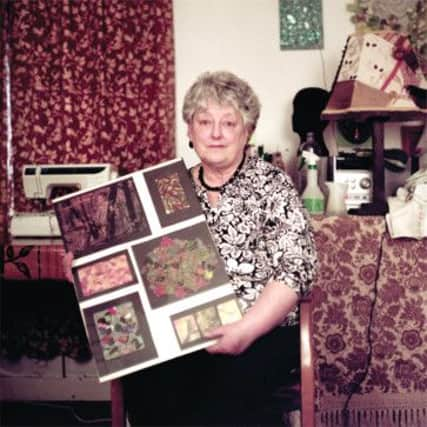Art show explores grief, love and loss


Death is one of the few taboos that still remain in modern western society, but it is a sad fact of life that at some point we will all have to deal with the pain of losing someone we love.
A new photographic exhibition, What is Left?, which opened at the Civic in Barnsley last week faces the difficult topic of grief head on and explores how a lost loved one is remembered through an object they have left behind. The show, created by Leeds-based artist and performance maker Ellie Harrison and London-based photographer Roshana Rubin Mayhew, takes the form of a series of portraits of local people holding a meaningful object that belonged to someone they have lost.
Advertisement
Hide AdAdvertisement
Hide AdWhat is Left? is part of Harrison’s ongoing project, the Grief Series, a sequence of interactive artistic collaborations, using as a structure the seven-stage grief model, which began with her acclaimed 2012 performance piece The Etiquette of Grief.
“After doing that, people would come and tell me their stories of loss,” says Harrison. “People want to share these stories, so I thought about how I could find a project that would bring as many differnt voices and perspectives into the work as possible.”
She wondered whether photographs might be the best medium and so she got in touch with Rubin Mayhew and they discussed possibilities. “I originally had a family portrait of me with pieces of furniture and objects in place of lost family members and we looked at how we could open that out.”
The pair then considered very carefully how to find participants, and the ethics surrounding that, and eventually contacted bereavement charities and community hubs.
Advertisement
Hide AdAdvertisement
Hide Ad“We wanted to find people for whom taking part would be a really positive thing,” says Harrison. “We were aware of the difference between the project being therapeutic and therapy, because we are not qualified therapists. We wanted to create an environment that felt safe where people could talk honestly about their grief.”
Harrison and Rubin Mayhew visited the participants in their homes, taking photographs and listening to their stories.
The images in the exhibition are brought to life by an audio interview with each person, a transcript booklet of their story and a bespoke chair chosen by the artists to reflect the space in which the portrait was taken. This allows the viewer to reflect and, in effect, spend time with the image they are looking at. “You really get a sense when you are sitting in front of the portraits that you are having a conversation with that person,” says Harrison. “People have sometimes spent forty minutes sitting opposite one photograph.”
Those featured in the portraits include Catherine who holds her grandmother’s fan, Helen holding a framed collage her daughter made in school and Harrison herself who holds a pair of leather gloves inherited from her mother. Harrison admits that working on the project has sometimes been emotionally challenging but also “really rewarding and life-affirming too” and she has been overwhelmed by the generosity of the participants. “These people have become part of our lives,” she says. “They speak with such incredible honesty. It’s been so much more than just turning up, taking a photo and doing an interview. Although the project is about death, it’s just as much about love and treasuring the present moment.”
• What is Left? the Civic Barnsley until March 6.